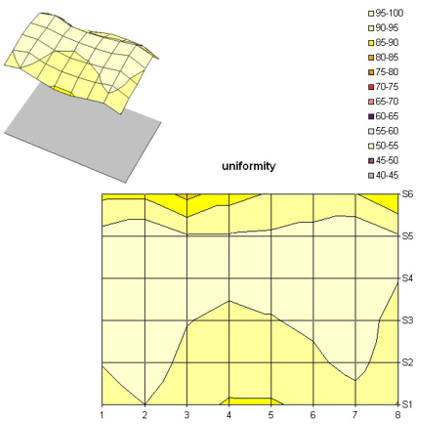26" LCD TVs: Are They Ready for Prime Time?
Spatial Uniformity
Finally a piece of good news for this TV set! The test showed the panel to be very uniform, with all the values concentrated within 10% of the total range. That's a really good result.
The Neovia's static qualities looked mediocre. What about responsiveness?
A Little Flabby
The latency profile calculated from the results of our sensor test is odd:
In fact, on close inspection, the Neovia NEO26DT isn't bad at all, but it falls short of the best 19" monitors, and even loses to 12 ms 19" screens in rapid transitions. This profile is the result of testing at decent contrast and brightness conditions. Pushing the contrast to the maximum resulted in better readings for speed, but the image dynamics were completely flattened.
Video Quality
The Neovia NEO26DT suffers greatly from its lack of black depth. The picture was washed out and lacked contrast, though it was relatively free of noise. Images from DVDs weren't too jagged, but they lacked a little sharpness. Latency was also sometimes perceptible in action movies like The Matrix, which we also use as a reference DVD.
Get Tom's Hardware's best news and in-depth reviews, straight to your inbox.
Interpolation And PC Mode
When we used an Xbox as our image source, the images we got weren't jagged, but they were too blurry - somewhat the opposite of the Sharp TV. As we mentioned earlier, this is a common issue: either you get a sharp but jagged picture, or else one that's smooth but blurred. For the moment, the only TV that's managed to strike an effective compromise between the two is the Samsung. Using the Neovia as a PC display, we found it wasn't possible to go beyond a resolution of 1024x768 with certain video cards, including the professional GeForce and the one in our test notebook, an Asus W1N.

